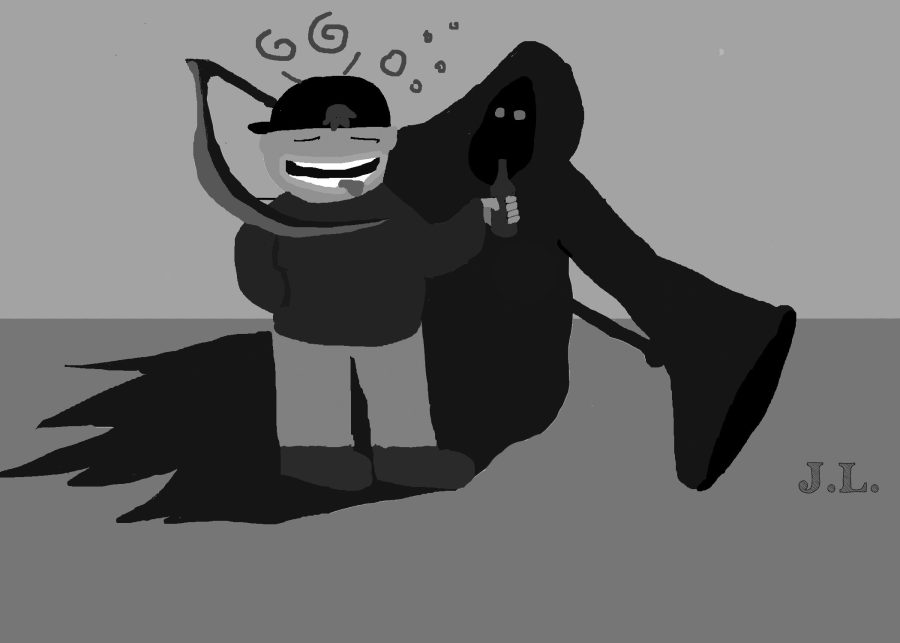Every parent wants to believe they have raised the perfect child, one who makes decisions only after considering all ethical, moral and logical consequences. The reality is, teens do not make the perfect decisions all the time. Some students choose to procrastinate, some choose to cut class, but a particularly prevalent and worrisome trend is underage drinking.
According to the Substance Abuse and Mental Health Services Administration (SAMHSA), 29.4 percent of national high schoolers ages 14 to 18 have used alcohol within 30 days before the survey.
Undeniably, underage consumption of alcohol can be detrimental to one’s health and often leads to dangerous decision making, such as drunk driving. The U.S. in particular has had few effective programs to educate teens on the effects of alcohol.
Attempting to diminish the number of traffic deaths caused by young drunk drivers, the National Minimum Drinking Age Act was signed into law in 1984 by then-President Ronald Reagan. The Act prohibited the purchase and public possession of alcohol for anyone under the age of 21. Since the rise in legal drinking age, adolescent drinking has been driven underground to the riskiest of settings: unsupervised high school blowouts and fraternity parties. This leads the drinking away from adult supervision, which could “model moderation,” and lead teenagers by exhibiting moderate drinking.
A shocking reminder of unsafe settings for drinking materialized when a freshman at Pennsylvania State University died after chugging vodka and beer at multiple drinking stations as a part of a Beta Theta Pi fraternity hazing ritual. The fraternity brothers, in fear of legal repercussions of underage drinking, delayed calling 911 by 12 hours in hopes that the freshman would wake up. The delay in medical attention was due to the fear of legal consequences, and students’ insufficient education in alcohol safety. If these college students had been mandated to learn how to safely handle alcohol at a younger age, their knowledge of how to deal with binge drinking would have been different, and the death of that freshman could have been avoided.
Since the rise in legal drinking age, adolescent drinking has been driven underground to the riskiest of settings.
Compared to European cultures, where children are introduced to safe alcohol habits at a young age, American parents do not address safe drinking habits often enough. When presented with alcohol, American adolescents do not know how to handle alcohol safely. Without the cultural expectation to address drinking at home, students are left to rely on their peers to educate each other on the subject.
If the federal government mandated alcohol education to include teaching teenagers to drink responsibly, binge drinking habits and accidents would decline drastically. Alcohol education should be embedded within the physical education curriculum for K-12 grades; the year-by-year curriculum should be adjusted to correlate with the students’ age. Providing education on how to drink responsibly would not only prepare adolescents to make better decisions, but also benefit the nation as a whole when the number of driving under the influence (DUI) incidents and alcohol-related accidents and fatalities declined.
Although many states educate students on the effects of alcohol, a proper alcohol curriculum must also incorporate guidelines on making smart decisions around drinking. Although Paly students learn about the negative effects of alcohol and how to abstain from drinking in Living Skills, they do not learn how to make safe drinking decisions that would be important in the upcoming years. A class addressing how to take care of oneself when given alcohol would greatly benefit public health because currently, students in high school and college often view binge drinking as a normalized rite of passage and social activity.
Currently, alcohol education is not consistent or even existent in certain high schools, as alcohol education standards in K-12 public schools vary from state to state. Some states such as Alaska and Hawaii do not require alcohol education programs in their public schools. Other states, such as Delaware, require 10 to 15 hours of drug and alcohol training each year starting in kindergarten through 12th grade. An early and consistent alcohol education could dramatically shift the attitude students have about drinking. This would result in a more knowledgeable, and therefore cautious, generation of citizens.
To measure effects of the inconsistent levels of alcohol education, the Centers for Disease Control and Prevention (CDCP) conducted a survey. The results showed states that mandated alcohol training had significantly lower alcohol-attributed deaths compared to states that did not — 7 to 9 percent of teenage deaths in Delaware were alcohol-attributed, compared to the 15.1 to 17 percent in Alaska and 13.1 to 15 percent in Hawaii.
Skeptics of federally-mandated alcohol education program may claim adults will learn to drink responsibly once they are of legal age, in addition to being opposed to the intrusion of the federal government in their lives. The CDCP provides statistics that would argue otherwise. A 2015 survey by CDCP showed that 25 percent of the surveyed adults in both Alaska and Hawaii participated in binge drinking, whereas only 16 percent of the surveyed adults in Delaware participate in binge drinking. The lack of alcohol education as a teenager correlates directly to the number of adults who continue to make irrational drinking decisions later in life.
Raising the drinking age to 21 has not done an adequate enough job keeping teens safe. By mandating K-12 yearly alcohol education units within the physical education classes, we are making another effort to help youth understand the effects of alcohol, taking action to ensure fewer alcohol-related accidents occur and educating all teenagers about alcohol.

